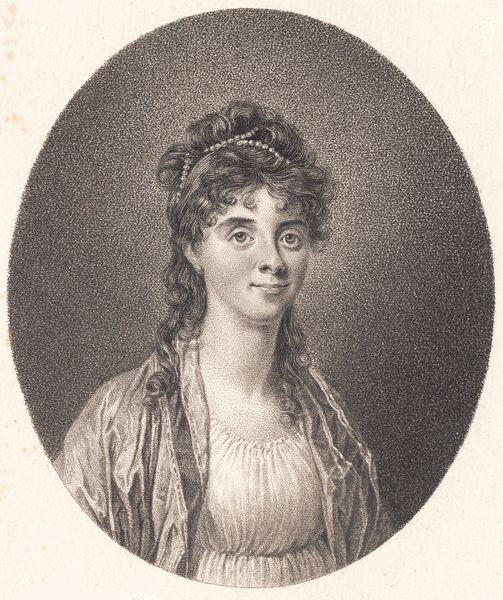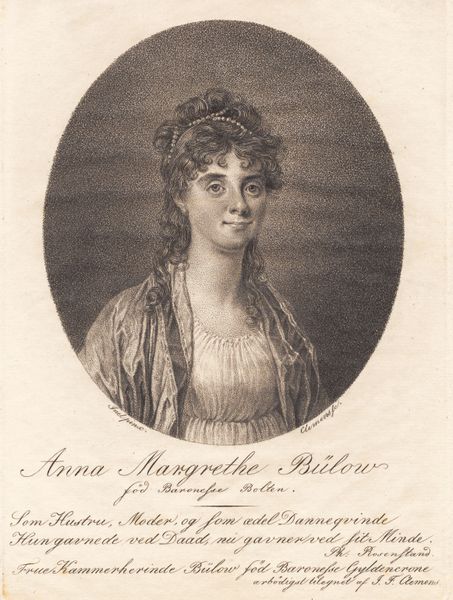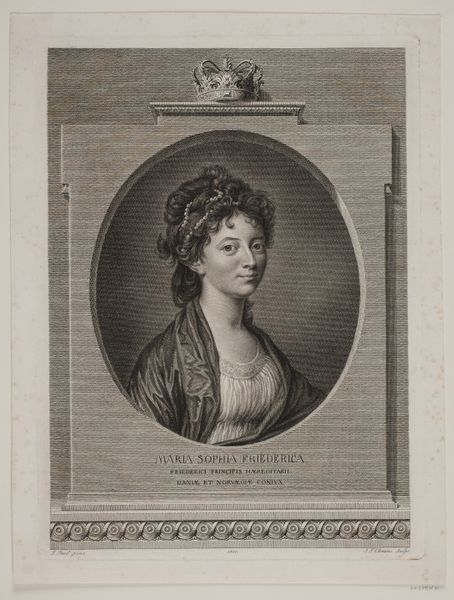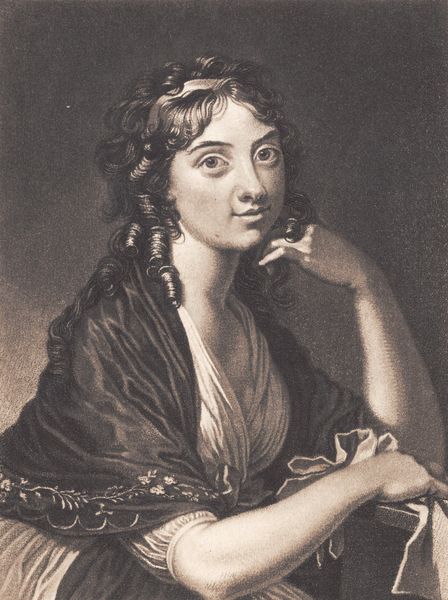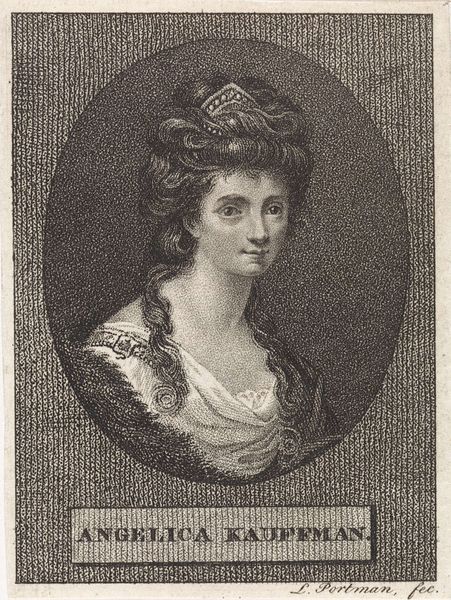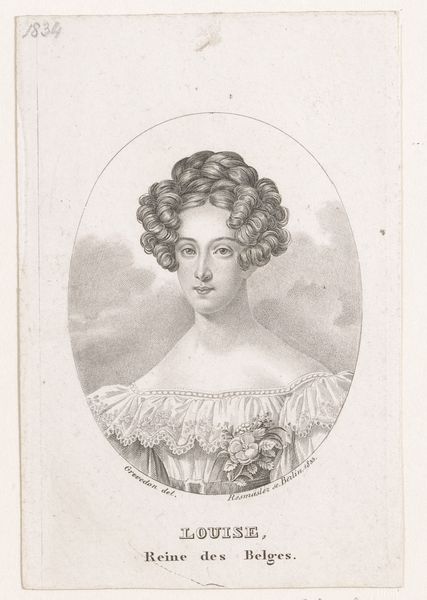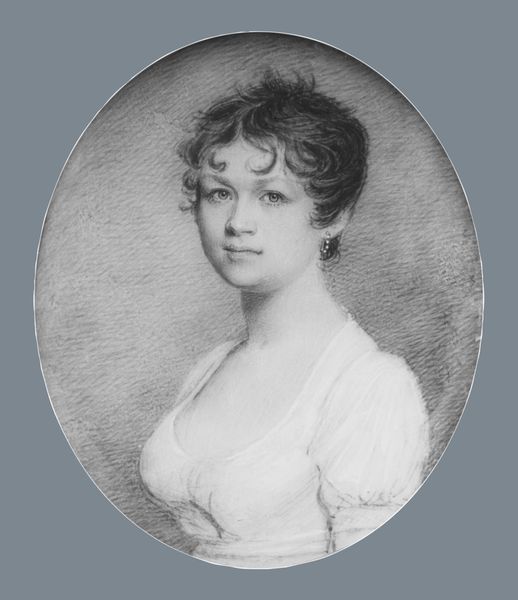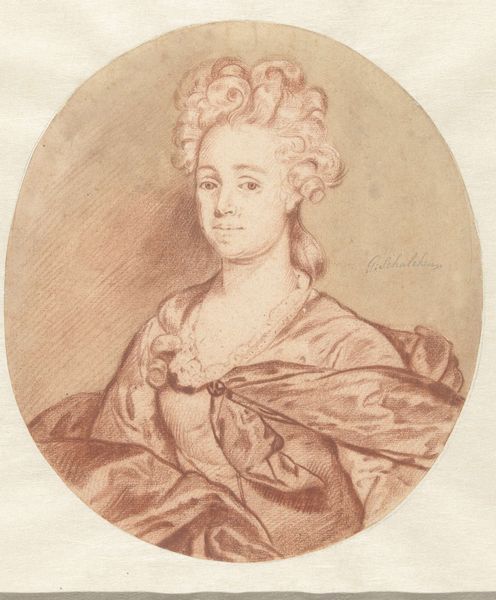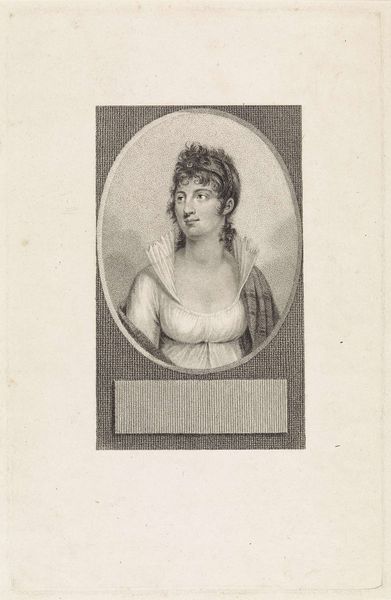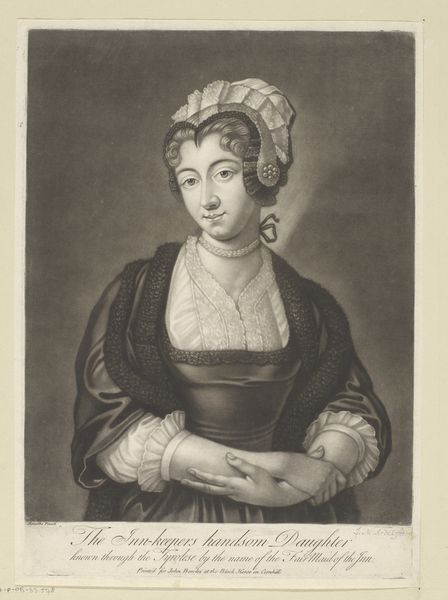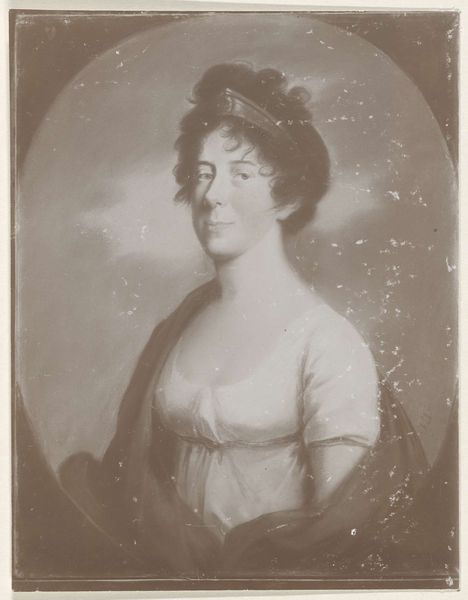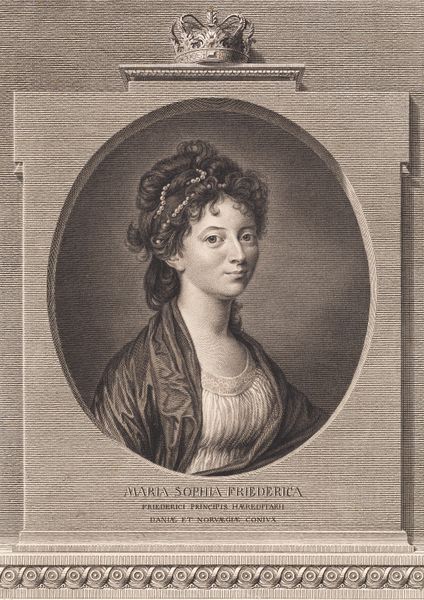
Dimensions: 215 mm (height) x 151 mm (width) (bladmaal), 199 mm (height) x 138 mm (width) (Plademål), 133 mm (height) x 112 mm (width) (billedmaal)
Curator: Good morning. Today we’re looking at a portrait of Anna Margrethe Buelow, made by J.F. Clemens between 1748 and 1831. It’s an engraving, with the most delicate line work, contained within an oval. Editor: She looks like she's stepped right out of a Jane Austen novel. A quiet, gentle presence, but there's something very knowing in her eyes. Almost a touch of mischief. I wonder what she was thinking. Curator: I'm struck by how intimate the portrait feels, despite the formality of the era. The pearl headband and softly draped shawl give her a certain grace, but there’s also a real softness and naturalness that comes through, due to the engraving’s intricacy, I would say. Editor: The oval frame lends a dreamlike quality. As though she is floating on the edge of consciousness. It reminds me of cameos and lockets, and whispers from the past that get carried forward through families. I bet there's some complex cultural dynamics embedded there, if one was to follow those clues back through time. Curator: You can sense that. Portraiture in the Baroque period had a purpose, and there’s that push-pull between showing a social status, but, like you said, offering this more personal glimpse, and here the balance of the social requirements with the individual spirit seems, in Clemens’s skilled hands, remarkably struck. Editor: Absolutely. And what does the visual language of portraits really tell us, besides, supposedly, preserving appearances? It’s like holding onto a fading memory, layering significance and projecting meaning through line and composition…It really sparks questions about how identities are both constructed and remembered. Curator: That's beautifully put. The artist, while adhering to a representational depiction of a particular individual, allows access to some much larger field, that vast repository of visual information and experience which, to my mind, confirms her in all our minds and memories. Editor: Exactly! The artwork becomes almost a Rorschach test. Perhaps these images act more like vessels for what we're searching for. The face we meet isn't really hers, maybe it's ultimately a version of ourselves.
Comments
No comments
Be the first to comment and join the conversation on the ultimate creative platform.
